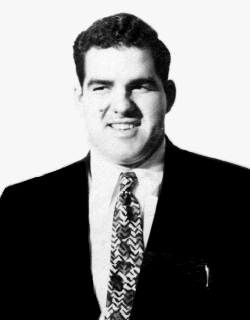Harry Daghlian (1921-1945) was an American physicist. He died in 1945 from radiation poisoning after a criticality accident at Los Alamos.
Daghlian initially studied at MIT, then transferred to Purdue University in 1942 to pursue his newfound passion for particle physics. He received his BS in 1942, and began graduate work on cyclotrons with Marshall Holloway. In 1943, J. Robert Oppenheimer approached Holloway and invited Holloway and his team, including Daghlian, to work at Los Alamos. Daghlian remained at Purdue for another year, completing his Masters work, before departing for Los Alamos in 1944.
At Los Alamos, Daghlian was assigned to Otto Frisch’s criticality group, working at the Omega Site. He conducted dangerous criticality experiments to determine the critical masses of fissile materials. If something went wrong in one of these experiments, fission could result. Daghlian also helped to prepare the plutonium core that would eventually be used at the Trinity test.
On August 21, 1945, Daghlian was conducting several criticality experiments with a plutonium core. These involved building a stack of tungsten carbide bricks around the plutonium sphere to create a “neutron reflector,” which was meant to lower the mass of plutonium required for criticality. After several hours of work, he went to dinner, then decided to return to the Omega Site alone, in violation of safety protocols. With a monitoring instrument turned on, Daghlian constructed four layers of bricks. He had reached a fifth layer, and was about to place a brick over the center of the construction, when his monitoring equipment informed him that if he did so, the core could go supercritical. He moved to pull the brick away, but instead dropped it directly on top of the core. He knocked the brick away, further exposing himself to a lethal dose of radiation.
On September 15, 1945, Daghlian died after a painful battle with radiation poisoning. His was the first of such posioning deaths associated with the Manhattan Project. As a result of his death, stricter safety measures were implemented, as they would be again following the death of Louis Slotin the next year.





